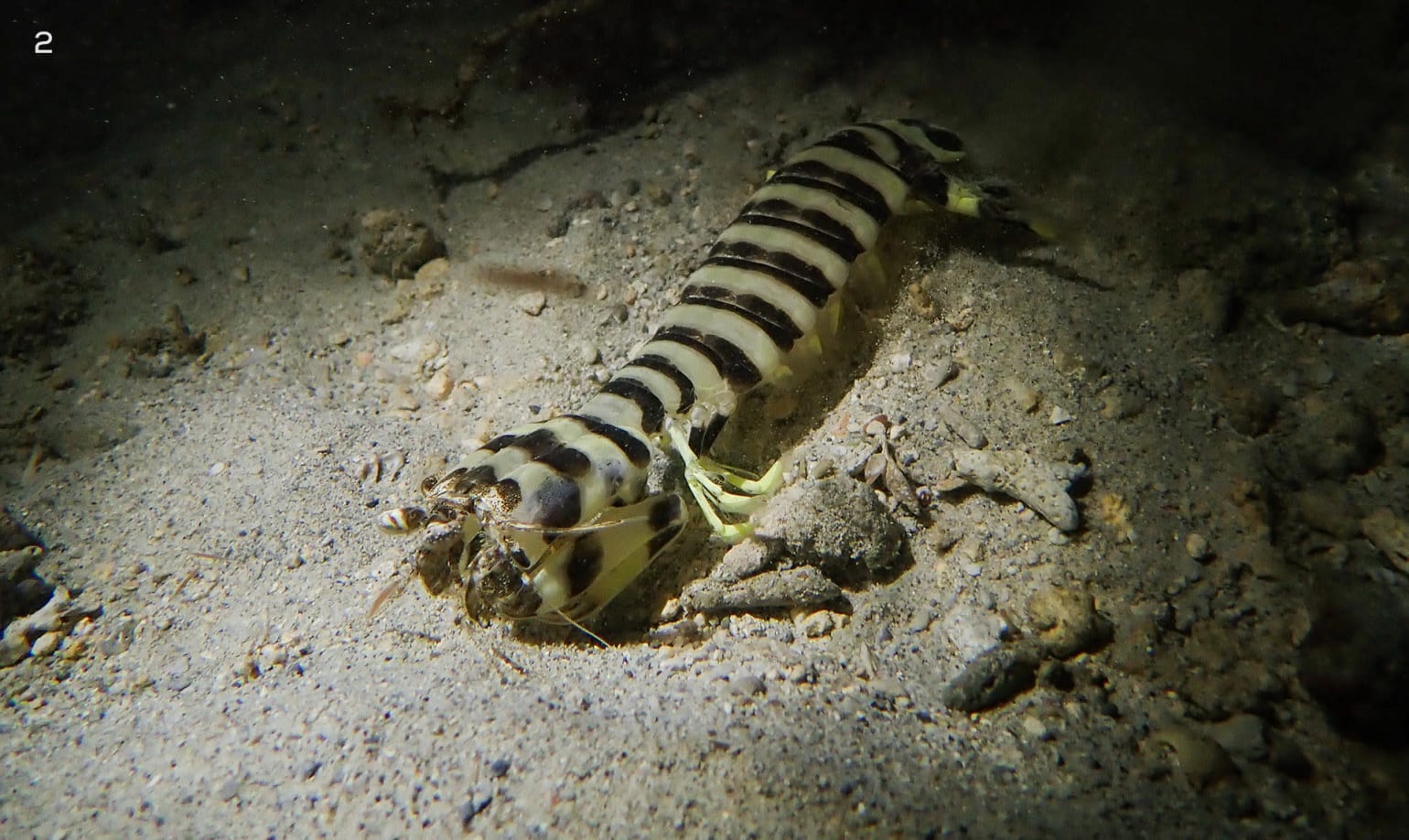 Listen to this article
•
15:34 min
Listen to this article
•
15:34 min
Like a superhero jumping from rooftop to rooftop, a small blurry figure darts from coral to coral. Its origin story dates back to a time before dinosaurs when plants first set root on land. Around this time, its early ancestors diverged from the shrimp. This little creature is the mantis shrimp (Stomatopoda). Today, over 520 species of mantis shrimp inhabit the shallow tropical and subtropical oceans. Even though most are barely 10 cm, they possess abilities you would expect to see only in superhero comics and movies.

Vision
Mantis shrimp don’t need a “spidey sense” to know who’s approaching. The two cylindrical eyes poking out of the very top of their heads can move independently of one another. This gives them an excellent 360-degree view of their surroundings, making it almost impossible to sneak up on them. In addition, each eye of the mantis shrimp is divided into three sections, resembling layers of a cheeseburger, with each section functioning as an individual eye. So, while most animals require two eyes to judge depth and distance, each of the mantis shrimp’s eyes has the ability to do this independently of the other.
If this was not enough, here is a superpower that we cannot even perceive. The eyes of a mantis shrimp have 12-16 colour receptors, as opposed to the measly three we humans have. Giving them the ability to see the world in a way we can’t imagine. In fact, mantis shrimp can track the sun’s position in the sky along with the direction of polarised light, and use this information as navigational cues when traversing the intricate maze of coral reefs and seagrass meadows they inhabit.

A suit of armour
Mantis shrimp have a suit of armour that rivals Iron Man’s. They have a tough outer shell that may come in various colours, from vibrant blues and reds to cryptic greens and browns. This flamboyant suit of armour is divided into several sections, providing them with a strong layer of protection while also being flexible enough for them to make quick, agile movements. But wait, there’s more; just like Captain America, mantis shrimp have a shield of their own. The very last segment of their tail is especially well armoured and used as a shield of sorts. A mantis shrimp will quickly turn around and use this shield to block the burrow entrance when a predator or rival mantis shrimp approaches.
(1) When not in use, the mantis shrimp’s powerful arms neatly tuck into the sides of their body, making them sleek and nimble enough to navigate the tight crevasses of their environment.(2) Some mantis shrimp have fake eye spots on their tail, which distract would-be predators to direct their attacks towards the well-armoured tail instead of the vulnerable head. Photos: Evan Nazareth
The punchline
Every superhero needs to know how to throw a punch, and mantis shrimp are no exception. In fact, this is one of their most iconic features. Mantis shrimp “arms” are actually modified mouth parts and closely resemble the arms of the unrelated land-dwelling praying mantis insect, which is how they got their name. Much like the insects they are named after, the mantis shrimp use their arms (or claws) to catch prey. Based on the shape of these arms, mantis shrimp are divided into two broad groups: spearers and smashers. Both groups are voracious predators but vary significantly in the prey they hunt and the way they go about doing this.
Spearers are ambush hunters. They lie in wait at the edge of their burrow, with only their eyes poking above the surface, waiting motionless for an unsuspecting fish to approach. When one does, the mantis shrimp erupts out of its burrow, extending its dagger-like arms straight at the fish. Before the fish can even register what has happened, they find themselves empaled between rows of curved spines that line the mantis shrimp’s arms. The mantis shrimp then drags them back into the lair to be devoured.

On the other hand, smashers are more active hunters and can throw a punch that would put the Hulk to shame. While they also live in burrows, they venture out searching for prey, which includes hard-shelled animals like clams and crabs. These can be tough nuts to crack, so spearing arms will not do, they need something more like Thor’s hammer, and that’s exactly what they have. Instead of sharp spines, these mantis shrimp have blunt club-shaped arms. With the help of muscles and tendons, the mantis shrimp builds up enough tension to swing the arm straight at its prey. In less than the blink of an eye, the club hits the prey’s shell with the speed of a bullet and enough energy to cause an audible shockwave. This shatters the tough shell of the prey and leaves its soft inners accessible for the mantis shrimp to feed on.
Mantis shrimp may be tiny and inconspicuous amongst the plethora of marine creatures, but if anything is clear, it is that you don’t need super vision like them to see what fascinating creatures they are.








